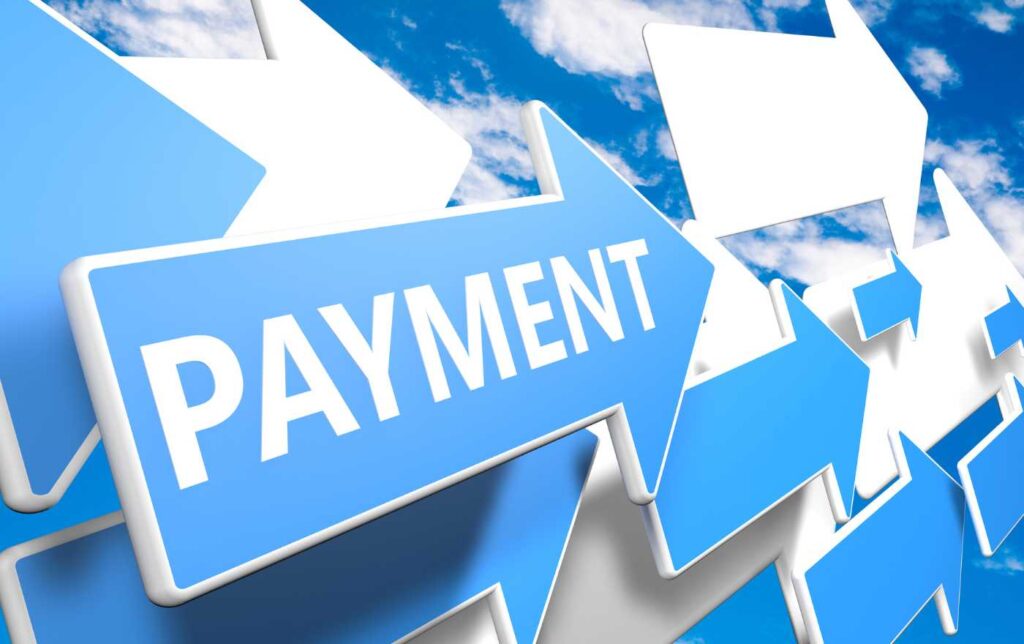Table of Contents
Introduction
The banking landscape has undergone rapid changes in recent years. From the rise of online and mobile banking to new financial regulations, the way we manage our money in 2025 looks very different than it did just a decade ago. With so many new checking accounts, savings products, and digital services now available, it can be challenging to determine which options are best suited for your unique needs.

The purpose of this comprehensive guide is to explore the diverse and ever-evolving world of retail banking in 2025. Whether you are a student opening your first account, a small business owner needing an integrated solution, or a senior looking for specialized services, you will discover the key information you need to make informed decisions about your banking and finances. We aim to demystify the array of choices out there and help you find the accounts that align with your life stage, spending habits, and financial goals.
With useful advice and insider tips, this guide will provide clarity on checking and savings accounts, outline the advantages and drawbacks of online banking, highlight accounts tailored for entrepreneurs and retirees, and much more. Our goal is to equip you with the insights you need to determine the ideal banking products and services for your individual situation in 2025 and beyond. Let’s begin unraveling the new world of banking.
How to Choose the Best Checking Account
When selecting a checking account, you’ll want to consider several key factors to find the option that best fits your needs and budget. Below are some of the most important aspects to evaluate:
Monthly Fees
One of the biggest considerations is monthly maintenance fees. Many checking accounts charge a monthly fee just for having the account, ranging anywhere from $5 to $25 per month. However, some accounts waive this fee if you meet certain conditions, like maintaining a minimum balance or setting up direct deposit. Compare fee structures carefully.
Overdraft Protection
Look into overdraft protection services to avoid costly fees if you overdraw your account. Some banks offer this protection for free or a small monthly fee, allowing you to link to a savings account or line of credit to cover overdrafts. This can save you from paying $30+ per overdraft transaction.
Accessibility
Consider how accessible the bank’s locations and ATMs are for your needs. If you frequently deposit cash or need in-person services, choose a bank with ample branches and ATMs near where you live or work. For those who bank primarily online, geographic proximity may be less important.
Interest Rates
While not common, some checking accounts do offer interest earnings on your balance. The rates are generally low, but could provide a modest return. Compare options if this interests you.
Minimum Balance
Many banks require you to maintain a minimum balance to avoid monthly fees. The amounts can range from a few hundred to several thousand dollars. Weigh whether maintaining the minimum is feasible for you.
Online Banking
Assess the bank’s online and mobile banking platforms. Look for intuitive interfaces, robust features, and strong security. This is especially vital for those who do online banking frequently.
ATM Access
If you withdraw cash regularly, consider the fees and restrictions for using ATMs outside the bank’s network. Some accounts reimburse out-of-network ATM fees, while others charge you. Wider ATM access offers more convenience.
Top Business Checking Accounts for Small Enterprises
When running a small business, choosing the right checking account is crucial for managing finances and transactions efficiently. Here are some of the best business checking accounts to consider based on key features:
Transaction Fees – Many top business checking accounts offer unlimited transactions with no monthly service fees. Banks like Chase and Bank of America waive fees if minimum balances are met. Look for an account that allows unlimited deposits, withdrawals, transfers without incurring excessive fees.
Interest Rates – Some business checking accounts pay interest, allowing you to earn money on your working capital. Compare APY rates and eligibility requirements. Options like Capital One offer up to 0.20% APY on qualifying balances.
Online Banking – The best small business checking accounts provide advanced online banking features like account management, bill pay, mobile check deposit, account alerts, and data integration with accounting software. Prioritize accounts with robust digital tools.
Mobile Deposits – Being able to deposit checks via a mobile app allows for greater convenience in making deposits anytime. Many top accounts, like those from Wells Fargo, allow mobile check deposits with their business checking plans.
Customer Service – When issues arise, you want reliable customer service for your business account. Evaluate the availability of phone, chat, email, and in-person support before choosing an account. Prioritize banks with dedicated business banking specialists.
Account Security – Protection against fraud and unauthorized transactions is also key. Opt for accounts with $0 liability guarantees, multi-factor authentication, and other security measures like transaction monitoring.
By comparing accounts across these key factors, small business owners can identify the ideal checking account to meet their financial management and transaction needs.
Senior-Friendly Banking
Seniors have unique banking needs, requiring services tailored to their lifestyles and accessibility requirements. When choosing a senior-friendly bank, there are several key factors to consider:
Large Print Statements
Many banks offer the option to receive large print statements by mail or online. These are easier to read for those with vision impairment. Banks like Bank of America and Wells Fargo provide 18-point font statements upon request.
Customer Service
Excellent customer service is crucial for seniors who may need more assistance with banking tasks. Banks with local branches, such as community banks and credit unions, often provide personalized service. There are also banks with dedicated senior call centers and banker teams to provide specialized support.
ATM Access
Convenient ATM access allows seniors to easily manage cash needs. Banks with widespread ATM networks, like Chase and Citibank, provide fee-free access. Some community banks also partner with larger networks to expand ATM availability.
Fraud Protection
Seniors can be targets for financial fraud and scams. Banks like TD Bank offer extra security measures including verbal verification of transfers and 24/7 fraud monitoring. Monitoring accounts for suspicious activity is also important.
Interest Rates
The best savings accounts allow money to grow via compound interest. Compared to national banks, some community banks and online banks offer higher interest rates on savings and CDs. Seniors living on fixed incomes can benefit from maximizing interest earnings.
Navigating Online Banking
Online banking has become an indispensable tool for managing personal finances in the digital age. With the right online banking services, you can conveniently check balances, pay bills, transfer money, set account alerts and more – all with just a few taps on your smartphone or computer. When selecting an online banking platform, there are a few key factors to consider:
Accessibility – Make sure your bank’s online platform is easy to navigate and accessible across devices. You want to be able to seamlessly manage your money, whether you’re on a desktop, phone, or tablet.
Security Tips – Online banking security is critical. Opt for a bank that offers multifactor authentication, transaction monitoring, and other security measures. Never access your account on public WiFi and create strong unique passwords.
Bill Pay – Online bill pay allows you to easily pay bills and even set up recurring payments. Choose a bank that offers bill pay with no added fees. You should be able to pay bills directly from your checking account.
Account Alerts – Set up customizable account alerts to stay informed about your balances and transaction activity via text, email or push notifications. Common alerts include low balance warnings, large transaction notifications, and due date reminders.
Mobile Apps – A user-friendly mobile app is key for on-the-go banking. You want features like remote check deposit, touch/face ID login, and peer-to-peer payments. Read reviews and download a few banking apps to compare.
Transferring Money – You should be able to seamlessly transfer money between your accounts and external accounts. Look for banks with easy online money transfers, whether you need to pay a friend or deposit funds into another bank.
With the right online banking tools, you can manage your finances conveniently and securely from anywhere. Do your research to find the bank that best fits your digital lifestyle and financial needs.
Exploring High-Yield Savings
High-yield savings accounts can be a great tool for growing your money over time. These accounts offer interest rates significantly higher than traditional savings accounts, allowing your deposits to earn more interest.
The highest-yielding savings accounts today offer around 2% APY interest rates. While this may not seem like much, it adds up through the power of compound interest. For example, depositing $10,000 into an account with a 2% interest rate will earn you $200 in interest for the year. The next year, you’ll earn interest on the full $10,200 balance, resulting in $204 in interest. After 5 years, your balance would grow to over $11,000 even without adding any more deposits.
Many high-yield savings accounts have minimum deposit requirements, often ranging from $100 to $25,000. Some accounts waive the minimum if you enroll in automated transfers from a linked checking account. It’s important to look at the minimum deposit when comparing high-yield savings banks.
The main limitations of high-yield savings are accessibility and transfer limits. Many of these accounts restrict transactions to 6 per month, and some charge fees for transfers above the limit. High-yield savings work best as funds for emergencies or long-term goals, not everyday spending.
When comparing high-yield savings accounts, look at interest rates, minimum deposits, accessibility of funds, and any account fees. Top banks for high-yield savings include Ally, Marcus by Goldman Sachs, and Synchrony. Choosing the right savings account takes some research, but the compound interest benefits make it worthwhile.
No Minimum Deposit Accounts
Opening a new bank account often requires depositing an initial sum of money, which can be a burden for some, especially students and those with lower incomes. However, banks today offer checking and savings accounts with no minimum deposit requirements, making banking more accessible.
Benefits for Students and Low Incomes
The main benefit of no minimum deposit accounts is the lack of an upfront cost to open the account. This allows students and those with limited funds to open accounts without depositing several hundred dollars first. It removes a key barrier to banking access.
No minimum accounts also help avoid monthly fees. Some banks charge monthly fees if your balance drops below a certain threshold, but accounts with no minimums waive this. You can maintain a $0 balance without penalties.
For students living on budgets or those with irregular income streams, having the flexibility of no minimums is valuable. You can open an account without large starter funds and fluctuate your balance as needed.
Potential Drawbacks
The downside is that no minimum accounts tend to lack the features and perks offered on other accounts. You may miss out on higher interest rates, rewards points, ATM fee reimbursements, and other benefits that come with premium accounts.
No minimum accounts also do not help you build credit or provide overdraft protection in most cases. They offer basic banking with limited extras.
Checking vs. Savings Options
Both checking and savings accounts may come with no minimum deposit options. The key differences are that checking accounts allow withdrawals and payments, while savings accounts limit transfers.
Of the two, no minimum checking accounts are more practical for daily spending and transactions. Meanwhile, basic no minimum savings work well as secondary accounts for building emergency funds or longer-term savings goals.
Overall, no minimum deposit accounts serve a valuable purpose in banking inclusion, especially for younger adults and lower-income. Just be aware of the trade-offs compared to premium accounts. Evaluate your needs and financial situation to choose the right fit.
Student Banking Made Simple
College opens the door to adulthood and financial independence for many students. Choosing the right bank account helps students manage money wisely during this transitional period. The best student bank accounts offer low fees, user-friendly apps, budgeting features, parental oversight options, and student-focused rewards.
When evaluating banks for student accounts, fees should be a top priority. Overdraft charges, ATM fees, and monthly maintenance fees quickly add up for students on limited budgets. Free checking accounts with no monthly fees are ideal. If fees can’t be avoided, look for accounts with easy ways to waive charges, like maintaining a minimum balance or setting up direct deposit.
Banking apps designed specifically for students stand out with simplicity and financial guidance. An intuitive mobile interface makes it easy to check balances, pay bills, deposit checks, and track spending on the go. Look for apps with free alerts, such as low balance notifications, to avoid overdrafts. Gamified budgeting tools that incentivize savings are useful for learning money management skills.
Parental controls allow oversight of accounts without full access. Students gain independence while parents can ensure proper account use by setting daily spending limits or viewing certain transactions. Some banks enable parents to instantly transfer funds to a student’s account in case of emergencies or expenses. This oversight capability brings peace of mind.
The best student accounts include perks like bonus interest rates on savings, waived or discounted fees, and rewards points earned on debit card purchases. Seek out banks that offer special student rates on loans or higher yields on savings accounts. Rewards programs are extra worthwhile if points can be redeemed for tech products, gift cards, or travel discounts – useful for budget-conscious students.
With the right account, students can bank simply and responsibly while developing important financial skills. Choosing a bank that caters specifically to students’ needs sets the stage for money management success both in college and beyond.
Choosing the Right Bank for You
When selecting a bank, it’s important to take stock of your individual needs and assess which institution can best serve you. Consider the following factors:
Assessing Individual Needs
- What are your banking habits? Do you frequently visit physical branches or prefer managing finances online? Select a bank that caters to your preferences.
- How much do you typically keep in checking and savings? Look for accounts with balance requirements that match your funds.
- What fees matter most to you? Prioritize banks with free or low-cost services for the features you use frequently.
- Do you need access to credit? Seek a bank that offers credit cards and loans that meet your qualifications.
- How much customer service do you require? Opt for banks with robust customer support via phone, chat, in-person, etc.
- Do you make international transactions? Find a bank with partnerships overseas or lacking foreign transaction fees.
- How strong are the bank’s digital capabilities? Ensure mobile apps, web interfaces, ATMs, etc. are convenient and functional.
Weighing Pros and Cons of Options
- Compare interest rates, fees, and account terms side-by-side. Don’t just consider upfront offers; look at the long term.
- Research customer satisfaction and reviews related to practices, policies, and service.
- Consider convenience factors like proximity to branches, user-friendliness of online access, and ATM availability.
- Weigh the value of any special perks, benefits, or reward programs.
- Assess how easy it is to address issues by connecting with customer service when needed.
- Verify the bank’s financial stability through credit ratings and news about performance.
- Determine whether the bank’s values and practices align with your priorities.
The right bank depends on personal circumstances and needs. Analyze options thoroughly before committing to optimize for your financial situation.
Conclusion
Choosing the right banking options can seem overwhelming, but being informed is the first step. This guide has covered the key factors to consider for checking and savings accounts tailored to your unique needs and financial situation.
To recap, focus on fees, interest rates, accessibility, and additional features when comparing accounts. Do your research to find banks that align with your priorities, whether that’s robust online services, great customer support, or minimum balance waivers.
For seniors, look for banks with services designed for simplicity and assistance. Students should choose accounts with low or no fees and digital tools. Small business owners need features for frequent transactions, tracking finances, and managing payroll.
No matter your circumstances, there are great checking and savings accounts available in 2025 if you know what to look for. Empower yourself through education and evaluation of all the options at your disposal. Don’t settle – find the bank that can truly help you thrive financially at this stage of life.
For further reading, review consumer resources like Bankrate and NerdWallet that offer ongoing banking insights and account recommendations. You can also visit your local bank branches to speak with financial advisors who can guide you one-on-one. Don’t be afraid to ask questions and advocate for your ideal banking relationship.




